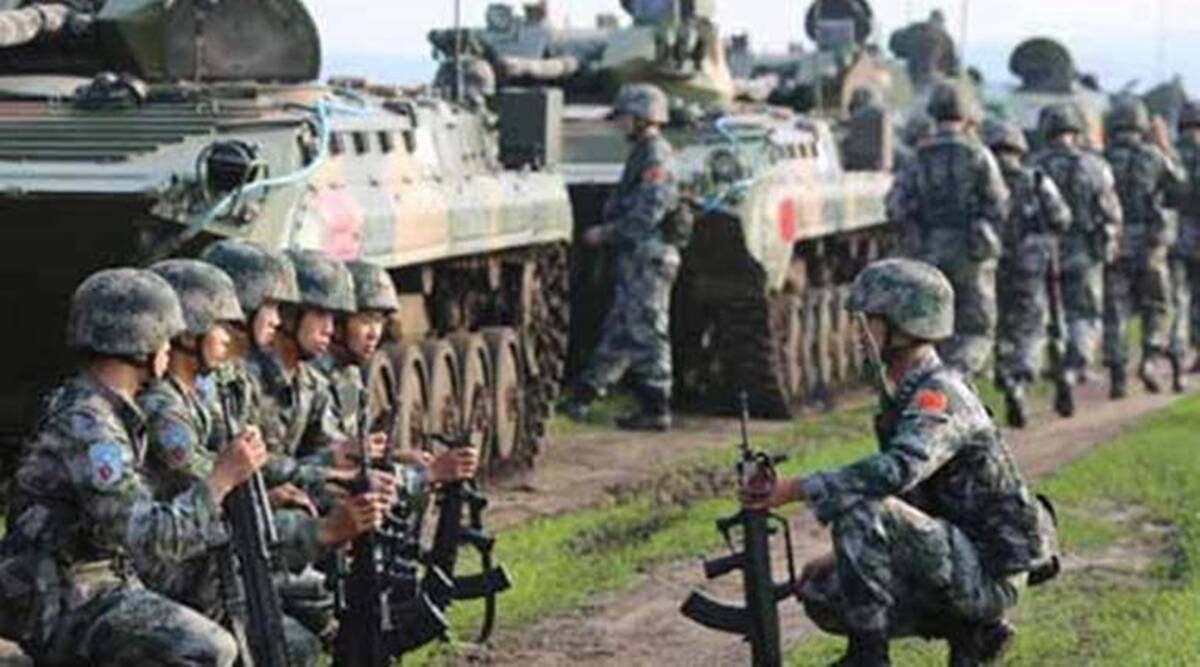
SOURCE: ENS
Former Chief of Air Staff, Air Chief Marshal BS Dhanoa (retd), has said that while there were several advantages that China held militarily vis-à-vis India yet it was a classic case of ‘Haathi ke daant khan eke aur, dikhane ke aur’ because many capabilities of China were in the experimental domain and there was a lot of strategic posturing being done by it in the present stand-off in Ladakh.
The former Air Chief was moderating a discussion on the airpower capabilities of China on the first day of the Military Literature Festival here on Friday with Air Vice Marshal Arjun Subramaniam (retd), Group Captain Ravinder Chatwal (retd) and Taiwanese strategic expert, Dr Ming-shih Shen.
Air Chief Marshal Dhanoa said that the People’s Liberation Army Air Force (PLAAF) had sketchy air battle experience which was restricted to bombing operations in the Korean war.
The experts taking part in the discussion were unanimous in their view that the Chinese were hampered by the fact that the airfields in Tibet were situated very far away from each other.
“In fighter operations, you have to have deployments where airfields mutually support each other. Airfields are far away in Tibet from each other, in some cases around 400 km. This reduces loiter time for the aircraft, reduces fuel capacity if you have to divert. Our bases are within 100 km of each other in comparison and we can distribute our assets more easily,” said Air Chief Marshal Dhanoa.
The former Air Chief said Chinese military doctrine depends a lot on rockets and artillery which is old Soviet theory.
“In any future conflict there will be a lot of body bags coming back. Chinese society will not be able to take it like they did in 1962. Will their society allow them to face attrition like Korea?” he asked.
“Everybody wants to quote Azerbaijan, Armenia conflict examples for drones but neither of them had integrated air defence system. Small drones in swarms will complicate things a bit but will they be deployed in the Himalayas is a big question. Survival of large drones in other than ISR role is a big question,” Dhanoa added.
The former Air Chief maintained that even if there was a stalemate with China it will be a loss for it. “Neither we can take Lhasa nor can he take Leh. But even if there is a stalemate, he loses face,” he said.
He conceded that the Chinese have gone leaps beyond India in space capabilities. “We are still at reconnaissance stage. We cannot have a constant stare at a front and that is a gap which we need to correct. Also the number of aircraft needs to be increased,” he said.
Dr Ming-shih Shen said that different training methods of PLAAF were observed by Taiwan since January this year. “In August, many PLAAF flights near Taiwan took place showing capability and warning for US-Taiwan relations. This was to show military muscle and deter Taiwanese independence. Despite Covid pandemic, the incursions by PLAAF aircraft did not cease,” he said.
Air Vice Marshal Arjun Subramaniam claimed that any future India-China conflict will be limited in time and space, will be high intensity and in high altitude with marginal spillover in maritime domain. “Both air forces will stay away from attacking targets in deeply populated spaces,” he said.
He added that any conflict will be preceded by sabre-rattling, transgressions and all measures short of war. “It is only when these fail that the aggressor will resort to calibrated action,” he said.
“Unlike 1962 when thousands of Chinese troops swarmed down from slopes, this time around no such thing will happen as every thrust will be met with friction on the ground. Even if the conflict spills in maritime domain the success will depend upon combination of maritime and air assets interoperability.Very few tangible gains will be made in force versus force engagement and the outcome will be decided by air power,” he said, adding that IAF has qualitative edge over PLAAF in several areas with network centric capability in air operations and inter theatre mobility among them.
“Due to PLAAF’s frequent exercise with Pakistan and Turkey it is moving ahead of archaic Soviet tactics even as several capabilities that it boasts of are in technology demonstrators domain,” he said.
Subramaniam said that never has so much load and personnel been flown in Ladakh by IAF, not even in 1962.
“The first 48 hours will determine if the IAF will be a decisive factor in the India-China conflict. Indian armed forces have been talking about full-spectrum war and this includes two-front war. I will look at two limited fronts and not two extended fronts. Our armed forces are prepared for contingencies on two limited fronts,” he said in answer to a question.
Gp Capt Ravinder Chatwal said that PLAAF has limitations in launching air campaign against India due to limited number of airfields in Tibet. He said while the deployment of Surface to Air Missiles by China is at a massive level in Ladakh yet these too had limitation due to the line of sight problem in mountains.
“The S400 may be long-range but you cannot achieve that in mountains. The universal way is to fly at low level and you will be out of their envelope. We need to get out of the myth that the Chinese are ten feet tall,” he said.






